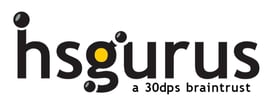When Focus Groups Are a REALLY Bad Idea
In some situations, focus groups have value in helping companies understand the feelings, thoughts or attitudes of their target audience (although some experts now discredit them entirely). Where they certainly do not have value is in determining the effectiveness of your inbound customer experience. In fact, using focus groups to determine the effectiveness of your inbound customer experience is a really bad idea.
When consumers interact with your brand online, they are largely looking for answers to specific questions. They are seeking information, insights, evidence that you have what they need, and confirmation that you have a good reputation that gives them confidence that they can trust you.
When it comes to the actual interactive experience, i.e. the experience of using your website, asking a small sampling of your target market how they feel about your website design, or even what they specifically like or dislike about it, is largely a waste of time and money.
These well-intentioned folks are likely to view this request in one of two ways (neither particularly helpful).
- They perceive that you want them to offer a critical analysis, so they basically trash the design, regardless of how effective it is.
- They try to tell you what you want to hear, assuming that a supportive response is good for you.
Consequently, their feedback does little to help you know how truly usable your website is. Therefore, a usability study is MUCH more effective than a focus group in identifying what’s working, what’s not, and what could be improved in your inbound customer experience.
Usability testing is a much more hands-on activity that involves having someone actually interacting with the website, while a facilitator asks the user to perform specific core tasks, and monitors the entire experience.
Usability testing is focused on the interaction of the user with the website, i.e. how easily the user is able to accomplish the tasks, where they struggle, where their eyes go, the questions they verbalize, etc. Rather than asking qualitative questions, like “How do you like the design?” or “How does it make you feel?” a usability test is concerned with”Does it work?”
We appreciated the take on asking for opinions presented in Millo's recent article titled, "The #1 Worst Question You're Asking About Your Creative Work."
While a focus group can help you gain some insights into what customers think they want, it is not effective at finding out how well a particular website design performs. In fact, one of the established down-sides of a focus group is that it sometimes triggers group-think, with several in the group “piling on” when someone raises a particular concern.
Conversely, a usability study consisting of a significant number of participants provides specific and individual responses regarding the strengths/weaknesses of the inbound customer experience, and thus, the information received can be extremely productive and actionable. While this makes usability studies more expensive than focus groups, if the purpose is to gain real insights into the effectiveness of your online experience, it is almost always worth the additional time and cost.



